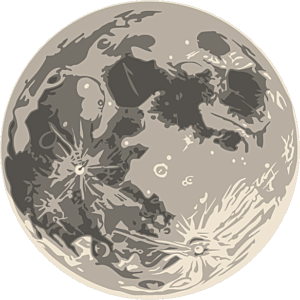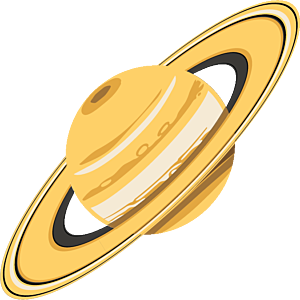The Downlink • Jan 24, 2025
Peekaboo!
Space Snapshot

Opposition meets occultation in this composite image of Mars passing behind the Moon captured from the Observatorio del Teide in Tenerife, Spain, on Jan. 14. The Moon's occultation of Mars was particularly spectacular because Mars was nearly at opposition (on the opposite side of the Earth from the Sun) and near the closest it comes to Earth, making the planet shine especially bright. Image credit: IAC/Daniel López/Carmelo González.
Fact Worth Sharing

It’s not uncommon to see the Moon occult (appear to pass in front of) a planet. What’s truly rare is a planet occulting another planet, in part because planets appear so small from Earth’s perspective. The last time this happened was in 1818, and it won’t happen again until 2065 when Venus occults Jupiter.
Mission Briefings


ESA’s Gaia space telescope saw our galaxy like no other spacecraft ever has. The European Space Agency’s Gaia mission made more than three trillion observations of roughly two billion stars and other objects since its launch in 2013, building the largest, most precise map of the Milky Way. The spacecraft is now nearly out of the fuel it uses to precisely point itself at its observational targets, and has ended its science mission. Pictured: An artist’s impression of the Milky Way galaxy edge-on, created using Gaia data. Image credit: ESA/Gaia/DPAC, Stefan Payne-Wardenaar.

Starship exploded after its most recent launch. SpaceX launched its Starship vehicle on Jan. 16, successfully catching the Super Heavy booster but losing the Starship second stage to an explosion. Debris rained down over the “prescribed hazard area” in the Caribbean, creating streaks of light in the sky and leaving debris in Turks and Caicos. The Federal Aviation Administration has called for a mishap investigation for the launch, as well as for last week’s New Glenn launch by Blue Origin, in which the first stage of the rocket failed to land as planned.

Budget cuts may impact Hubble’s science and mission operations. Last week, representatives of the Space Telescope Science Institute, which manages the Hubble Space Telescope’s science operations, said that proposed cuts of more than 20% to the mission’s budget could impact research and outreach as well as increase the risk to the observatory itself.

Comet ATLAS may have turned into a “headless ghost.” The nucleus of Comet ATLAS (C/2024 G3) held together as it made its closest approach to the Sun, but may have begun to disintegrate soon after. Amateur astronomer and astrophotographer Lionel Majzik captured a sequence of images from Chile showing the comet’s nucleus go from bright and condensed to diffuse. If the nucleus is breaking up, the comet’s tail will linger, continuing to move through space for some time as what some call a “headless ghost.”

Future Mars and Moon rovers may use shape memory alloy spring tires. The resilience of a rover’s wheels can be a deciding factor in its mission’s effectiveness. That’s why NASA engineers are experimenting with nickel-titanium shape memory alloys — a durable kind of material that can return to its original shape after being deformed — to construct rover wheels.
From The Planetary Society


The Planetary Society has space policy recommendations for the new Trump administration. On Jan. 20, when Donald Trump took office as the president of the United States, The Planetary Society published a set of recommendations regarding the nation’s space exploration policies. Read the recommendations here. Pictured: NASA's Orion spacecraft during tests at Kennedy Space Center in Florida. Image credit: NASA/Radislav Sinyak.

One of Earth's quasi-moons has a new name! Last year the podcast Radiolab teamed up with the International Astronomical Union and a panel of judges, including representatives of The Planetary Society, to ask the public to name the quasi-moon previously known as (164207) 2004 GU9. During the month of December, more than 10,000 people voted for their favorites from 10 finalist names, selecting Cardea (after the Roman goddess of doorways and transitions) as the winner.

Science fiction can sometimes be more science, other times more fiction. On this week’s Planetary Radio, hear from Hakeem Oluseyi and Tamara Krinsky, co-hosts of the podcast "Does It Fly?" that examines the science behind popular TV shows and movies.
What's Up

The planets are aligned again this week! In the west, look for super bright Venus very close to yellowish Saturn, with very bright Jupiter further to the east, followed by reddish, very bright Mars. Learn more about this alignment and what else to look for in January’s night skies.
Help save space missions. Join today!

If you are not already a member, we need your help. NASA is at a crossroads, and your support is needed today! Funding for space science and exploration is not guaranteed. It requires the voice of passionate advocates like you.
NASA is facing major budget cuts for the first time in a decade, and thousands of skilled scientists, engineers, and technicians have already been laid off at NASA centers across the US. NASA funding must grow, not shrink, if the agency is to succeed in returning to the Moon, exploring the Solar System, and seeking out life beyond Earth.
We must prevent future budget cuts. When you become a member of The Planetary Society, you join the world’s largest and most influential space advocacy nonprofit. Will you join us and enable the future of space exploration?
Pictured: Mars, one of the most promising targets in the search for life, imaged by the Hope spacecraft in 2021. Image credit: Emirates Mars Mission/EXI/Jason Major.
Wow of the Week

Astronomical artists get some pretty cool assignments, and this one seems especially fun to depict. This visualization shows WASP-127b, a giant gas exoplanet with newly discovered supersonic winds that whip around its equator. Moving at speeds as high as 9 kilometers per second (almost 6 miles per second), these are the fastest-moving planetary winds ever measured in the Universe. Data visualization artist Luis Calçada was tasked with depicting this windy world for the European Southern Observatory. Image credit: ESO/L. Calçada.
Send us your artwork!
We love to feature space artwork in the Downlink. If you create any kind of space-related art, we invite you to send it to us by replying to any Downlink email or writing to [email protected]. Please let us know in your email if you’re a Planetary Society member!


 Explore Worlds
Explore Worlds Find Life
Find Life Defend Earth
Defend Earth

